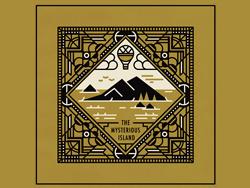Characteristics and flavors of three main coffee bean producing areas describe the historical story of the spread of coffee bean varieties
Coffee bean characteristics of three producing areas Flavor description Producing area Grinding scale Variety introduction
Yunnan coffee was planted on a large scale in the mid-1950s, and the planting scale once reached 4000 hectares. By the end of 1997, the province's coffee planting area had reached 7800 hectares. At present, the province's planting area accounts for 70% of the country's area, and its output accounts for 83% of the country's total. Whether it is from the planting area or coffee bean output, Yunnan coffee has established its dominant position in China.
Coffee comes from coffee beans, which in turn are harvested and processed from the fruits of trees. Coffee trees grow in tropical or subtropical countries with the equator as the center, between 25 degrees north and south latitude, called coffee belt. At present, there are more than 60 coffee producing countries. Coffee producing areas are distributed in South America, Central America, West Indies, Asia, Africa, Arabia, South Pacific Ocean and Oceania. In terms of output, Brazil ranks first in the world in terms of output, accounting for about 30%. The second place is Central and South America centered on Colombia, followed by Africa, The remaining 10% is distributed in Asia and the islands.
Coffee beans on the market are mainly Arabica (Coffea Arabica) and Robasta (Coffea Robusta) two original species. The plants, cultivation methods, environmental conditions, appearance, chemical composition and even processing methods of the subsequent green beans of the two coffee beans are different. Each of them can be subdivided into more varietal branches. Coffee beans circulating in the market are mostly distinguished by their origin
After coffee beans spread to all parts of the world, due to the different climate, soil quality, planting methods and processing methods, their taste can be said to be completely different. The basic characteristics of the taste of Arabica coffee beans from various major producing areas are listed below (it should be noted that coffee produced by different producing areas and different planting estates in the same producing area will have different flavors. Some coffee producing areas that are usually considered to be of average quality will also produce surprising fine coffee.
In order to expand coffee cultivation, Europeans tried to transplant coffee to their colonies in warm regions. The Netherlands was the first country to successfully transplant coffee. In 1696, the Dutch began the first attempt at transplanting coffee. Wittsen of Amsterdam suggested that coffee should be transported to Java (a former Dutch colony) for cultivation, but unfortunately, the coffee seeds were washed away by floods. The Dutch failed at their first attempt. In 1699, a Dutchman named Javid Klan finally brought a coffee cutting to Java. Coffee began to thrive in Asia. Coffee cultivation soon spread to Sumatra and Celebes in Indonesia.

Important Notice :
前街咖啡 FrontStreet Coffee has moved to new addredd:
FrontStreet Coffee Address: 315,Donghua East Road,GuangZhou
Tel:020 38364473
- Prev

Coffee beans picking year Brand recommended species Flavor description taste producing area
Flavor description of Brand recommended species in the year of Coffee Bean picking Coffee trees can be divided into two main varieties: Arabica and Robusta. There are also some minor species, such as the Liberian species (Liberica) and the Alabasta species (Arabusta), but they are rare on the market. Although Arabica and Roberta are widely planted,
- Next

Description of the characteristics and flavor of Latin American coffee beans the regional grinding scale of taste treatment
The grinding scale of Latin American coffee beans used to be the second largest coffee producer only in Brazil, but Colombia, which has been overtaken by Vietnam and ranked third in the world, is the largest supplier of washed beans in the world. Colombia has become synonymous with good coffee after years of image building. Although the flavor is balanced, thick and famous
Related
- Guji coffee producing area of Guji, Ethiopia: Humbela, Shakiso, Wulaga
- What is the most expensive variety of Qiloso in BOP multi-variety group?
- How to store the coffee beans bought home?
- Why are Yemeni coffee beans so rare now?
- Ethiopian Sidamo all Red Fruit Sun Sun Santa Vini Coffee beans
- SOE is mostly sour? What does it mean? Is it a single bean? what's the difference between it and Italian blending?
- Is Italian coffee beans suitable for making hand-brewed coffee?
- How to choose coffee beans when making cold coffee? What kind of coffee beans are suitable for making cold coffee?
- Just entered the pit to make coffee, what kind of coffee beans should be chosen?
- Can only Japan buy real Blue Mountain Coffee? What are authentic Jamaican Blue Mountain coffee beans?

